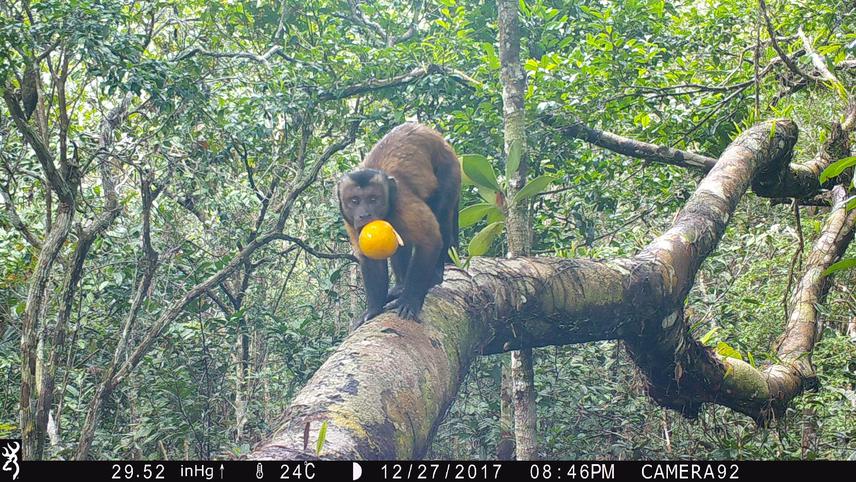Andressa Bárbara Scabin
Contemporary defaunation has led to severe depletion of tropical forest wildlife and consequent modification in ecological interactions that downgrades critical forest ecosystem services. These ecological disruptions can promote dramatic impacts on forest regeneration, reduce carbon stocks and the availability of resources for both wildlife and local livelihoods. We propose to evaluate the effects of large-vertebrate overhunting, forest dynamics and carbon storage in the western Brazilian Amazon across a vast landscape mosaic ranging from a persistently over hunted to faunally intact. Our results will be presented to various government agencies, as an attempt to enhance wildlife management in Amazonian forests.

Overhunting is the leading driver of Anthropocene defaunation resulting in an “empty forest” syndrome that alters ecological interactions and downgrades critical forest ecosystem. These ecological disruptions can promote dramatic negative impacts on wildlife populations and local livelihoods, tropical forest regeneration and carbon stocks. Persistent overhunting of large Amazonian primates and ungulates may cost US$13 trillion in forest carbon losses over a single generation time. In western Amazonia, 20thcentury hunting was very intense feeding a global trade of skin and fur; and most rural Amazonians still reply heavily on bushmeat. Despite this immense hunting pressure, local faunas do not exhibit any regional-scale extinctions, providing an excellent model to understand the process of functional extinction. Understanding how extinction of ecological interactions actually operates is essential to elucidate how hunting pressure alter seed dispersal and seed predation on different plant guilds.
This project will quantitatively assess the effects of hunting on ecological interactions, forest regeneration and carbon storage along the Juruá River of western Brazilian Amazonia testing the key hypotheses that overhunted forests for over a century will
(1) have lower prevalence of tree and liana species with functional traits linked to seed dispersal by large vertebrates;
(2) show higher compensatory abundance of small-mammal seed predators;
(3) sustain lower aboveground biomass and carbon stocks because of lower tree basal-area density of heavy-wooded tree species.
To achieve our objectives we are conducting an intensive floristic survey at 30 sites along the entire spectrum of hunting pressure (none, intermediate, and high faunal depletion) through forest plots for trees and saplings. Beside that, we will survey both small and large mammals using a novel of camera-trapping design within a paired grid. With this work, we will be able to demonstrate the effects of defaunation in terms of plant community dynamics at different levels of hunting pressure and demonstrate how functional species losses can degrade long-term forest ecosystem services as carbon storage via nonrandom alterations of forest composition, structure and dynamics. Furthermore, we are elucidate about compensatory abundance of small mammals and its effects on seed predation. Finally, this study will provide an important contribution to the debate on the consequences of overhunting on non-redundant species losses, and trophic cascades triggered by chronic depletion of large-bodied frugivores and our results will be presented to various government agencies, as an attempt to enhance wildlife management in Amazonian forests.